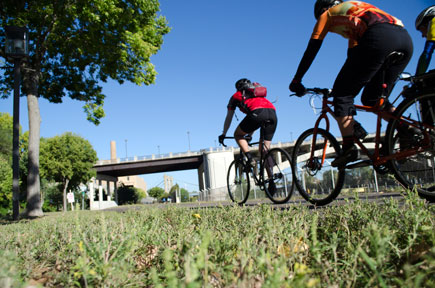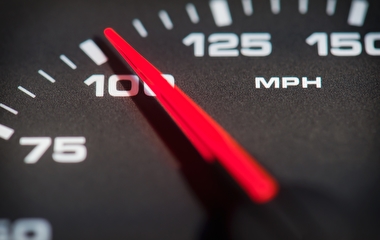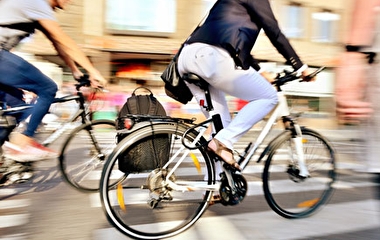Throughout the past decade, the popularity and importance of biking and walking have increased significantly across the nation. Pinpointing exactly how people incorporate biking and walking into their travel behavior, however, is a persistent challenge.
In an extensive five-part research study sponsored by the Minnesota Department of Transportation (MnDOT) and the Metropolitan Council, U of M researchers are exploring a rich set of data generated through detailed travel behavior inventories in the Twin Cities region. The data allowed them to analyze changes in walking and biking behavior during the past decade.
“Overall, our team found that auto travel decreased between 2000 and 2010, while biking and walking increased during that time,” says Professor David Levinson, RP Braun/CTS Chair in the Department of Civil, Environmental, and Geo- Engineering (CEGE) and the study’s principal investigator.
Bicycling grew from 1.4 percent of all trips in 2000 to 2.2 percent in 2010—an increase of 58 percent. Walking started with a larger share in 2000 (4.5 percent) and grew by a larger amount to 6.6 percent of trips in 2010—a 44 percent increase. One of the most important findings is that the actual bicycle mode share in the Twin Cities region is two to three times larger than reported by national data.
“Though the private auto still consistently dominates travel in the region, these relatively small mode shares translate to a substantial number of walk and bike trips on an average day in the region,” says Jessica Schoner, CEGE research assistant and lead author of the study. “We estimate about 12 million daily trips across the metro area, which means that on an average day people are making 190,000 bike trips and 735,000 walking trips.”
The researchers noted key differences between bicyclists and pedestrians and their walk and bike trips, including demographics, geography, trip purpose, and trip distance. For example, they found that while men and women choose to walk at an equal rate, a “gender gap” persists among bicyclists.
“Most of the growth in cycling came from increases in men commuting by bicycle, but closer examination of the gender gap in bicycling revealed some encouraging information,” Schoner says. “The gap appears to be in bicycling participation rates of men and women—there was no observed gap in the frequency of making bicycle trips among cyclists. This shows that programs encouraging women to try bicycling may help to further boost bicycling mode share.”
New bike infrastructure appears to have played a key role in the increase of bicycle mode share in the past decade. “While infrastructure was a significant factor in predicting bicycling in 2001, by 2010 the quantity of bicycle lanes around the home no longer differentiated bicyclists from non-bicyclists,” Schoner says. “This suggests that the Twin Cities’ expanded bicycle infrastructure has created pervasive and easy access throughout the city.”
Greg Lindsey, professor in the Humphrey School of Public Affairs and MnDOT’s first Scholar-in-Residence, is a co-author of the report. He was also the principal investigator of research conducted under MnDOT’s Bicycle and Pedestrian Counting Initiative.
“MnDOT is developing a program to monitor bicycle and pedestrian traffic that is modeled after the motor vehicle count program,” says Lisa Austin, MnDOT bicycle and pedestrian planning coordinator. “When used together, the traffic volumes and the travel diaries provide a clearer picture of how, when, and why people are traveling. This helps MnDOT and other agencies plan for better systems and analyze safety.”
The first project completed under the five-part study examined how changes in the accessibility of destinations have altered travel behavior in the past 20 years (see article in the February 2015 Catalyst). Additional parts of the study will look at the effect of transit quality of service on people’s activity choices and time allocation, changes in travel behavior by age group, and transportation system changes. The Catalyst will feature coverage of these projects as they are completed.




